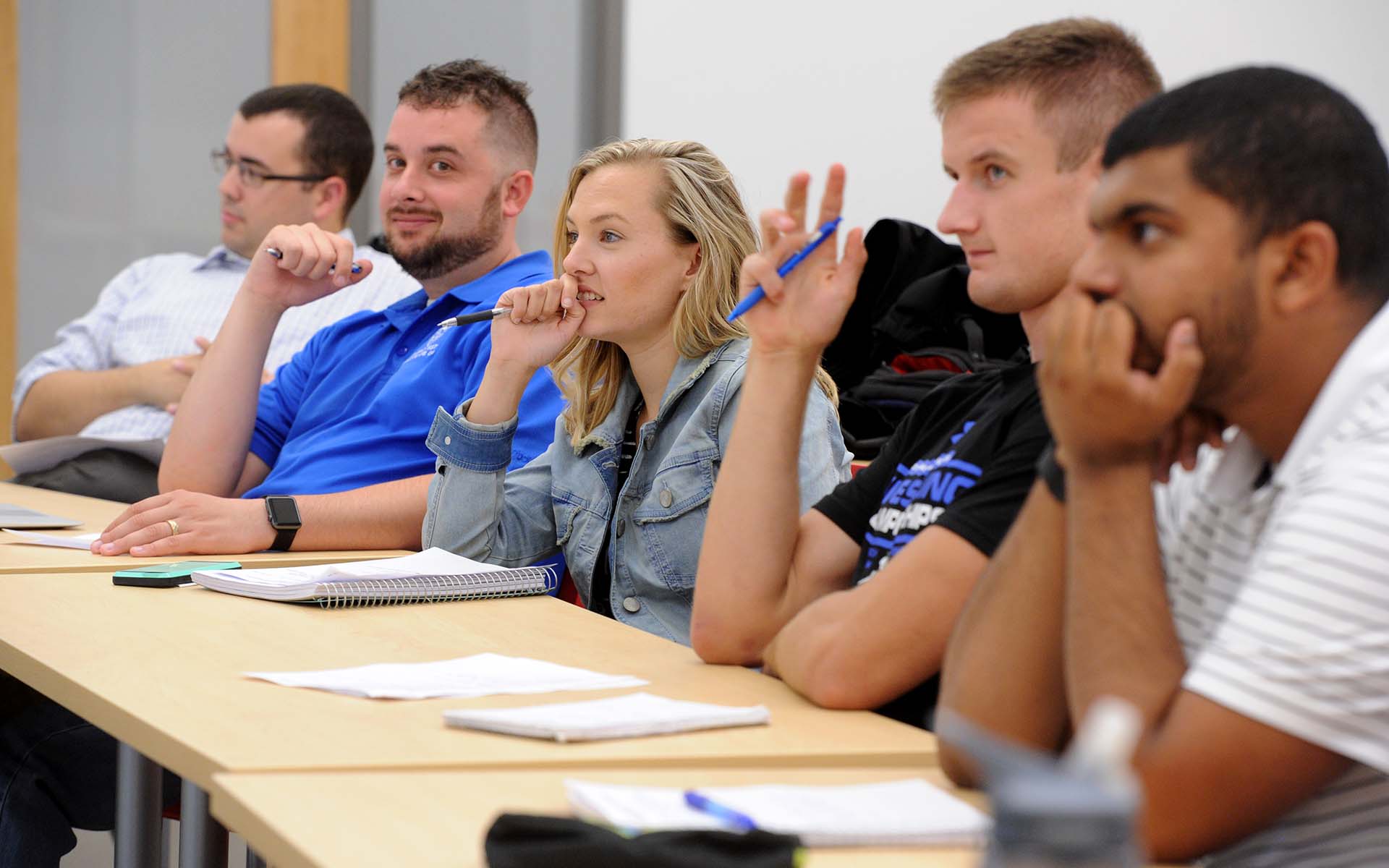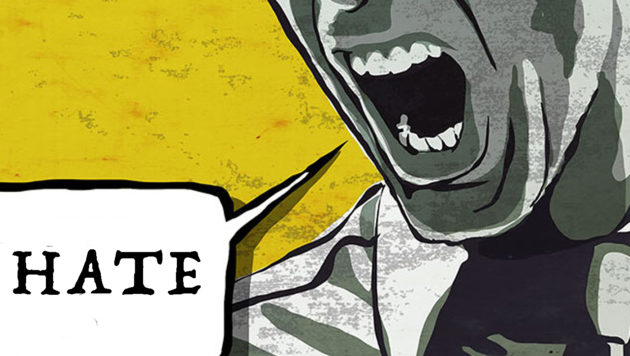Experts Matter. Find Yours.
Connect for media, speaking, professional opportunities & more.

Ticks…for most the word conjures up fears of Lyme disease, pets getting sick or having to twist those tiny bugs off your dog or yourself after a day in the fields or countryside. But at Georgia Southern University, our experts have taken a certain shine to the usually awful arachnid. In fact, just recently, Jackson Tomlinson, a graduate student in the Department of Biology was rewarded with the discovery of two species of ticks that are entirely new to science. It’s an astounding find and there are more details in the articles attached below. Are you a reporter covering ticks or looking to learn more about them? There are a lot of questions to be asked: What dangers and diseases do they carry? Are ticks regional and how many different species are there? Is there really a tic that makes people allergic to red meat? If you need to get to the bottom of what makes tick…tock – well then let our experts help. Lorenza Beati's research focuses on the study of the taxonomy, evolutionary relationships, and population genetics of arthropods, in particular hard-ticks. She’s also the Curator of the U.S. National Tick Collection. Lorenza is available to speak with media – simply click on her icon to arrange an interview.

Careful what you click – FaceApp is all the rage, but should we be more careful with what we share?
You can’t avoid it…just about everywhere you venture this week on social media, you’ll see friends, family members and even celebrities posting pics of what they’ll supposedly look like as they age gracefully into the future. It’s done with a new downloadable app, FaceApp, and it seems harmless enough until you read the fine print. “You grant FaceApp a perpetual, irrevocable, nonexclusive, royalty-free, worldwide, fully-paid, transferable sub-licensable license to use, reproduce, modify, adapt, publish, translate, create derivative works from, distribute, publicly perform and display your User Content and any name, username or likeness provided in connection with your User Content in all media formats and channels now known or later developed, without compensation to you. When you post or otherwise share User Content on or through our Services, you understand that your User Content and any associated information (such as your [username], location or profile photo) will be visible to the public.” – FaceApp terms of use For the more than 100 million people who have already used FaceApp, there are a few questions to be asked: Is this standard for downloadable apps or are these terms a new trend? What could FaceApp actually use this data for and what value does it hold? What are the concerns about privacy and protection of personal information? Is there a real reason to worry and can lawmakers take any recourse? If you are a reporter looking to learn more about FaceApp and data protection – let our experts help. Sarah Rees is the director of Augusta University’s Cyber Workforce Academy and she is an expert in the areas of cyber security and information protection. She’s available to speak to media regarding FaceApp – simply click on her icon to arrange an interview.

“Design thinking is a human-centered approach to innovation that draws from the designer's toolkit to integrate the needs of people, the possibilities of technology, and the requirements for business success.” - Tim Brown, CEO of IDEO I would add the following to Mr. Brown’s statement. This innovation approach requires more than a designer’s toolkit. It requires multiple departments within an organization to engage in the approach. If I’ve learned one thing in my more than 5 years in higher education it’s that companies continue to push for employees to become better problem solvers, more creative/critical thinkers, and ultimately stronger communicators. Why? Company growth is critical, and the aforementioned skills are how many companies will achieve growth. At Otterbein, we continue to provide education that addresses the development of these skills. We are designing a new focus in the MBA Program; Design Thinking. Otterbein University’s MBA Program is collaborating with the Master of Design (MDes) Program at the Columbus College of Art & Design (CCAD), to integrate a Design Thinking Area of Focus within the MBA program. Design Thinking combines design research, service design, studio & project course for prototyping/impression/artifact work, along with design thinking principles critical in succeeding in business and industry. It is designed for individuals who wish to pursue a career in business design, organizational change, and innovation, among other potential career paths. Are you a reporter covering stories that involve Design Thinking? Are you a student considering pursuing Design Thinking as a postsecondary option? If so, let our experts help with any of your questions. Eric is Director of the MBA Program at Otterbein University and is available to speak to the concepts of Design Thinking. Simply click on his icon to arrange an interview.

Billion reasons why Netflix loves binge-watching
The numbers are out, and the there’s no doubt about it, Netflix despite weaker Q2 figures released this week, streaming is now an industry mainstay. Netflix has transformed the industry and now viewers are no longer willing to wait for that one time a week a show usually airs. In fact, streaming options are now a must have for networks hoping to compete with Netflix and other services. And with Disney and Apple are now spending billions to catch up – audiences are in store for a lot more content. But, as bingeing television becomes the norm, there are also concerns? On the human side, what dangers are posed to people consuming enormous amounts of screen time. And on the industry side – how can show business keep up? And should it? Are you a reporter covering streaming services, binge-watching and the other habits of audiences? Then let our experts help. David A. Schweidel is Professor of Marketing at Emory University’s Goizueta Business School. He is an expert in the areas of customer relationship management and social media analytics as well, his research also includes binge watching. David is available to speak with media – simply click on his icon to arrange an interview.

July 28 is World Hepatitis Day – let our experts help with your coverage
Later this month, countries across the planet will acknowledge World Hepatitis Day in an effort to locate the “missing millions” and one day find a cure for this potentially debilitating and sometimes deadly disease. “Worldwide, 300 million people are living with viral hepatitis unaware. Without finding the undiagnosed and linking them to care, millions will continue to suffer, and lives will be lost. On World Hepatitis Day, we call on people from across the world to take action and raise awareness to find the ‘missing millions.’” WorldHepatitisDay.org According to the Centers for Disease Control and Prevention, 25 states in the U.S. have seen Hepatitis A outbreaks since 2017, with 22,028 confirmed cases and 216 deaths. Twenty-three of those outbreaks are still considered ongoing, including in Georgia, which has seen two deaths and 487 cases. Are you a reporter covering health, infectious diseases or outbreaks? Do you need to know more about the signs, symptoms and causes of hepatitis? How is it spread, who is most affected and what are the treatments? There is a lot to learn and that’s where our experts can help. Dr. Jose Vazquez is Chief of the Division of Infectious Diseases at the Medical College of Georgia at Augusta University and AU Medical Center. He studies and treats infectious diseases, including hepatitis. A leader in his field and a go-to expert for media regarding this topic, Dr. Vasquez is available to speak with media – simply click on his icon to arrange an interview.

Full speed ahead or time to pump the breaks when it comes to investing in ride-share companies?
There’s been a lot of talk and even some screaming from early investors about the state of ride-share stocks like Uber and Lyft. Since its IPO, Uber has been a rollercoaster ride for those who got in early. “When Uber stock (UBER) went public on May 10, it looked like a disaster. At minimum, underwriters look for a stock to close slightly above its offering price. Uber’s shares dropped 7.6% to $41.60 in the first day of trading and closed well below the offering price of $45. But a funny thing has happened since. After closing down as much as 18% from its IPO price, Uber stock has rallied 21% to close at $44.92 per share on Thursday. The stock eclipsed the IPO price during intraday trading for the first time on Wednesday and closed at exactly $45 that day.” June 07 – Barron’s But let’s be honest, unless you’ve got a crystal ball or a time machine – any stock is a gamble. How the market reacts, how the company performs and even how CEOs behave can dictate big gains or drastic falls. Steve Jones is a Professor of Finance at Indiana University's Kelley School of Business – he lent his perspective to the topic. “As far as which stocks to buy, there are never right or wrong answers – It’s just a question of a person being able to assess risk or potential returns. The IPO prices indicate the market has discounted Uber and Lyft stocks and sees them as riskier than originally perceived to be. Now, they do offer potential for a good return… For example, Facebook stocks dropped then rebounded… Google dropped then rebounded. Lots of stocks that have not done well at first have come back. Will that be these two? "I think there’s potential for it. On the other hand, we have this situation where analysts are critical of the business models of both these companies. It’s not clear Uber drivers are going to sign up to do this in the long run at these kind of wages, and if they can’t underpay drivers, how do they make money? There is a criticism going on of the business model here, and if this model can become profitable, I think the stocks will take off. It’s questionable though, whether that’s possible or not. That’s what the market is going back and forth on right now.” Are you covering the track Uber investors are on, other IPO’s or companies that are disrupting not just the marketplace but also the stock market? Then let our experts help with your stories. Steve L. Jones is an expert in the areas of asset valuation, corporate finance, financial markets, and investment management. He’s available to speak with media regarding these topics – simply click on his icon to arrange an interview.
Social issues and boosting a brand – More companies taking a stand
Procter & Gamble this weekend put out a full-page ad in the New York Times supporting equal pay – In fact, the company urged the US Soccer Federation to “be on the right side of history.” P & G also gave $529,000 (which equates to $23,000 for each of the 23 players on the United States Women’s National Soccer Team) to the Players Association to help close the gender pay gap. Indiana University Kelley School of Business clinical professor of marketing Kim Saxton says this is an excellent move for Secret and P & G. “This is brilliant. The Secret brand is all about being strong but 'made for a woman.' It makes sense for the brand to stand up for the very women it serves,” said Saxton. “I was a bit surprised at one level, because P & G is not typically a risk-taking brand. But as long as they stay consistent to the brand, know their target audience and what is important to that audience – which this clearly does -- It’s a brilliant move.” “We now have brands who are willing to take a stand on social issues,” Saxton continued. “In the past, brands may have steered clear of jumping into the conversation if it could offend someone. Now, brands are realizing that coming down on one side of a cause or another has worked well for Nike. Nike has taken flack for taking a stand on a number of issues, but they’ve stood strong and decided that’s what their brand’s about. If you help your target audience accomplish their goals, they will support you back, and that’s what’s happening here." Pay equity is just one issue that has come to the forefront as of late. Nike has also seen its brand benefit substantially when it decided to express its support for former NFL quarterback- turned-activist Colin Kaepernick. In fact, being on the ‘right’ side of that issue has some analysts pointing out it boosted the company’s value by close to 3 billion dollars. Social issues and marketing are emerging as a new trend. There are rewards, but there are also serious consequences as well. If you are a reporter covering this topic -- let our experts help explain. Kim Saxton is a marketing strategy professor who believes marketers should make data-driven decisions to improve their effectiveness. Kim is available to speak with media regarding this topic – simply click in her icon to arrange an interview.

Modernizing rural health – what it could mean for America
For Americans living outside of cities and in rural and sometimes remote areas of the country, the concept of readily accessible health care just isn’t a reality. However, the idea of expanding broadband internet into rural communities to improve access is one that shares support from all sides of the political spectrum. Just last week, an expert from Augusta University was called up to speak before lawmakers in Congress on the need for this technology and who it could best serve. "Broadband is the gateway to rural schools, businesses and health care providers," said Rep. Angie Craig, a Democrat from Minnesota. Lawmakers raised concerns about the dwindling number of hospitals in rural areas and the need to be competitive when recruiting corporations to do business. "Just the ability in rural America for a physician to pull up an X-ray at their home instead of having to drive to the hospital to look at a patient to know if that is something that’s an emergency," said Rep. Austin Scott, a Republican from Georgia. "One of the biggest needs is tele-psychiatry and tele-mental health," said Dr. David Hess of the Medical College of Georgia. - Spectrum News 1 - July 11 It’s an interesting topic and one that is gaining a lot of attention. How many rural Americans are without access to a doctor or hospital in the country? How much money could be saved by expanding online health care? Online is a viable solution, but are there drawbacks or concerns for patients? And how could expanding broadband and digital health care support issues like mental and maternal health across rural America? If you are a reporter covering this topic – that’s where our experts can help. Dr. David Hess is dean of the Medical College of Georgia and executive vice president for Medical Affairs and Integration at Augusta University. He also helped develop the REACH telestroke network in rural Georgia that now includes about 30 hospitals. Dr. Hess is available to speak with media regarding this topic – simply click on his icon to arrange an interview.

Social media and the road to 2020
It was supposed to be a summit to discuss social media with lawmakers, political campaigners and social media gurus. But never missing an opportunity to take a swipe at Silicon Valley, President Trump unleashed on the tech industry at the White House’s Social Media Summit. “Trump delivered his diatribe against Facebook, Google and Twitter — charges of political bias that all three companies long have denied — at an event at the White House featuring Republican lawmakers, GOP campaign strategists and social media meme-makers, a move that led some critics to express dismay that the president aimed to use the policy summit as a reelection push.” - July 11, Washington Post But will social media play the role it did in previous elections? Has the fad faded or accounts, influencers, followers and friends still as vital as ever? And what have we learned from the past election about account data being used to sway voters? There’s still a lot to know, and that’s where we can help. David A. Schweidel is Professor of Marketing at Emory University’s Goizueta Business School. He’s an expert in the areas of social media and is available to speak with media – simply click on his icon to arrange an interview.

Online extremism and hate groups
A recent episode of the Reveal podcast from The Center for Investigative Reporting and PRX titled "Hate in the homeland" features insights from Megan Squire, professor of computing sciences. Squire, who has conducted research into online networks of hate groups, participated in the discussion about how those groups are managing to remain online despite efforts to silence extreme sites. Squire recounts hearing the news about a gunman killing dozens of Muslim worshipers in Christchurch, New Zealand, and the discovery that he had posted a manifesto online. "I had already been collecting these hate manifestos from different killers, trying to do some text mining on them to see what themes they were taking from on another, to see if they were radicalizing one another," Squire told the podcast host. Squire collected what ended up being multiple versions of the shooter's manifesto posted online, but that there were only slight variations. "They were treating the manifesto as an artifact, almost a holy artifact," Squire said. She found something different with the livestreamed video of the attack, which others were changing significantly — creating memes, adding soundtracks, adding clips and artwork. That made it significantly harder to remove from the internet, she said. Source: If Dr. Squire can assist with your reporting about online extremism, please reach out to News Bureau Director Owen Covington at ocovington@elon.edu or (336) 278-7413. Dr. Squire is available for phone, email and broadcast interviews.






